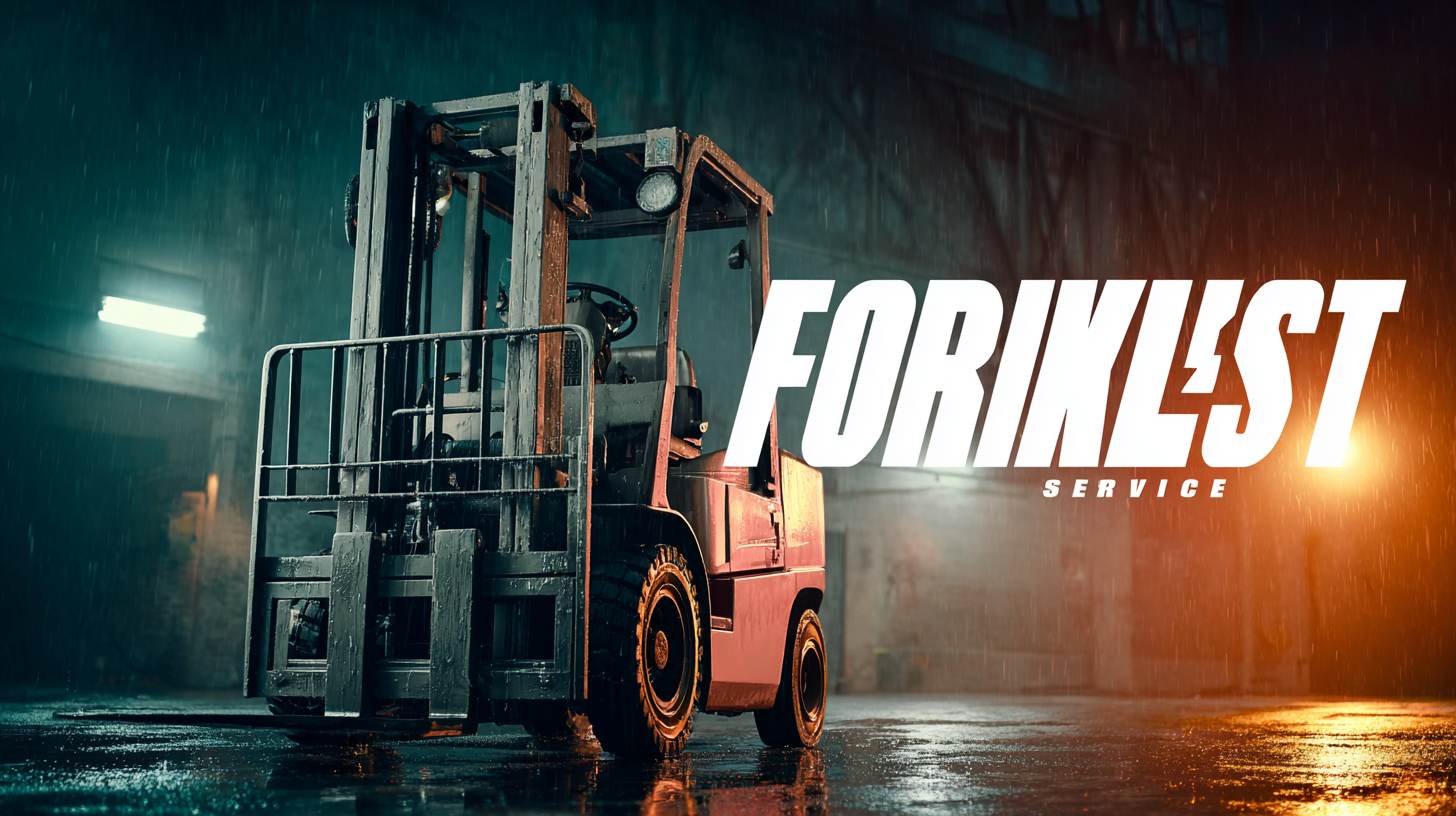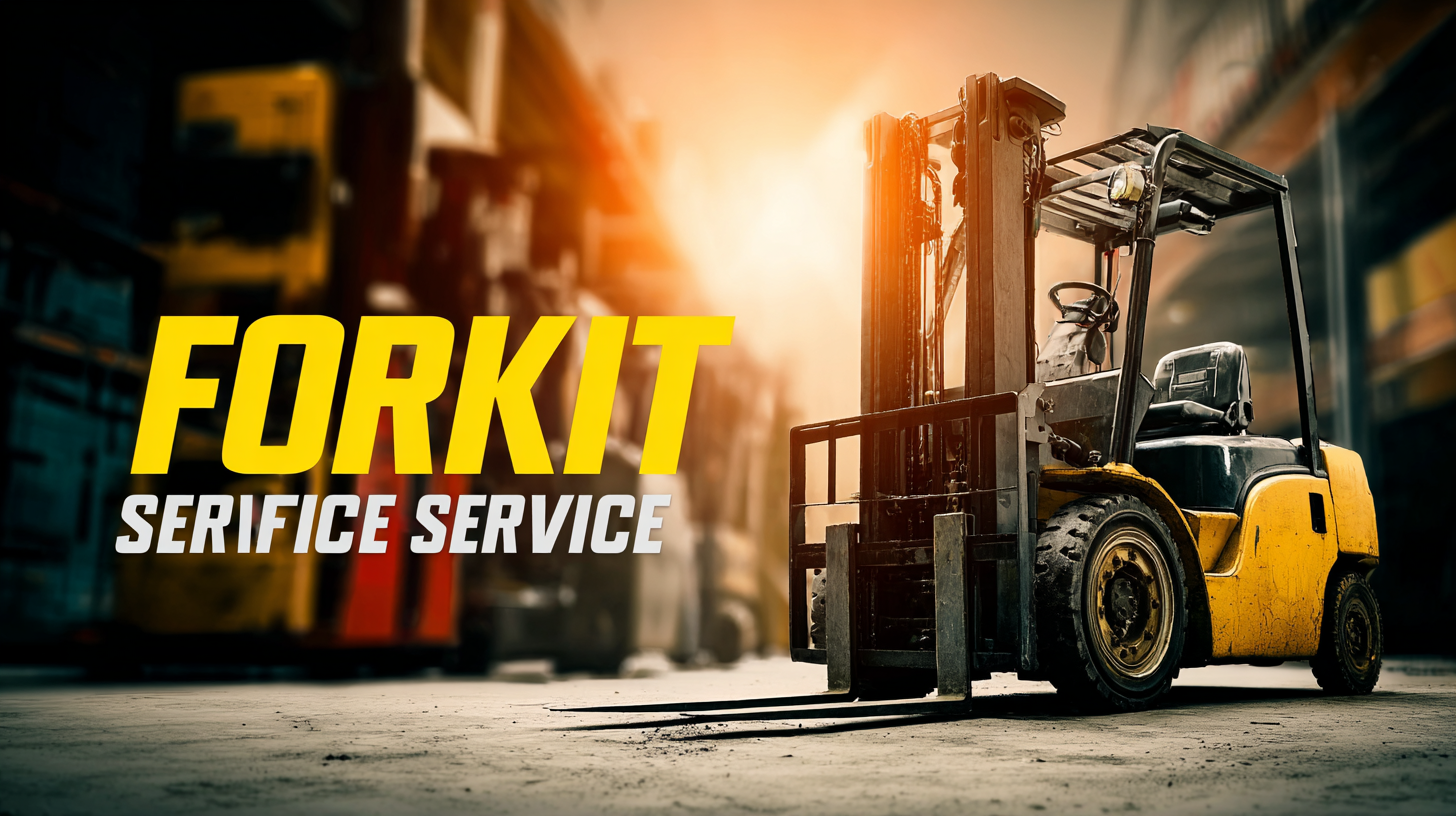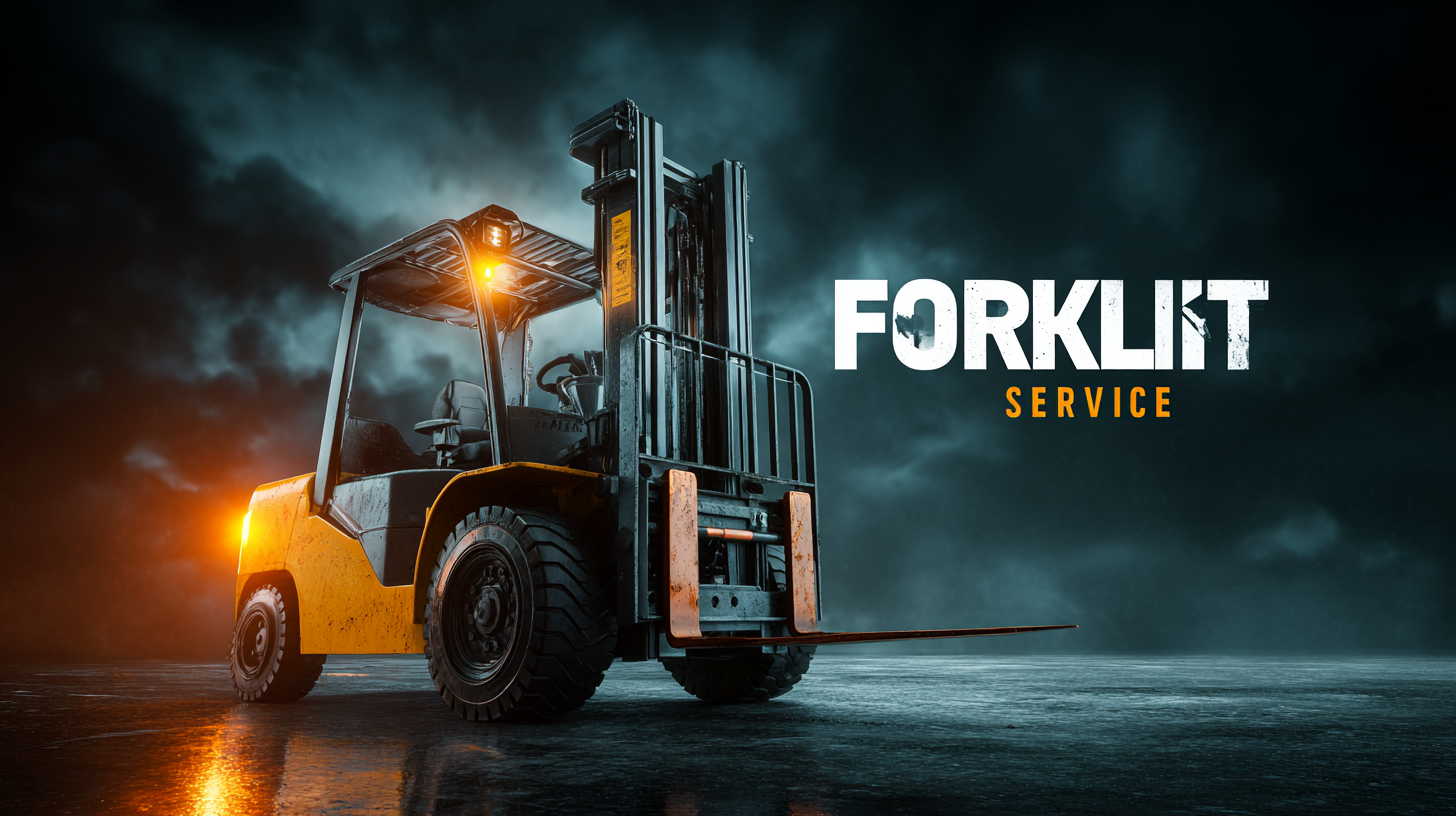
In today's rapidly evolving industrial landscape, the demand for efficient and reliable forklift service is paramount for businesses aiming to optimize their operations. According to the Workplace Safety and Health Report, over 70% of warehouses experience challenges related to equipment maintenance and downtime, often resulting in significant financial losses. Furthermore, a study by the Material Handling Institute reveals that well-maintained forklifts can enhance productivity by up to 30%. As businesses strive to meet increasing delivery and logistics demands, understanding the various aspects of forklift service becomes essential. This ultimate guide will explore the best practices, service options, and industry standards to ensure your forklift fleet operates at peak performance, ultimately contributing to the success of your business.

When it comes to understanding forklift service, several key metrics play a crucial role in evaluating the effectiveness and efficiency of these operations. Among the vital performance indicators are physical utilization, which measures how often equipment is in active use compared to its availability, and dollar utilization, a metric that reflects the financial returns generated from the rental fleet. These metrics provide businesses with insights necessary to optimize their forklift operations and ensure they are getting the best value for their investment.
Additionally, industry standards and benchmarks are essential for tracking performance against peers. Recently, services have emerged that offer comprehensive metrics for rental companies, enabling them to benchmark their operations against a wide range of variables including fleet age and rental rates. By employing these benchmarking metrics, businesses can not only enhance their operational strategies but also adapt to shifting market conditions and emerging trends, ensuring continuous success in an ever-evolving material-handling landscape.

When it comes to selecting the right forklift service for your business, it’s essential to begin with a thorough evaluation of your specific needs. According to the Forklift Truck Association, approximately 30% of all workplace accidents are related to the improper use of forklifts, emphasizing the importance of expert service and maintenance. Businesses must assess factors such as the type of loads being handled, the frequency of usage, and the operational environment. This will help in determining whether a basic service package suffices or if a more comprehensive solution is necessary.
Additionally, understanding the total cost of ownership (TCO) is crucial. A report by the Material Handling Industry (MHI) indicates that the operational costs of forklifts can account for 45% of a company's logistics expenses. As such, selecting a forklift service that offers preventative maintenance can mitigate unexpected repairs and downtime, ultimately driving productivity. When evaluating potential service providers, consider their response time, availability of parts, and their expertise in handling the specific type of equipment you utilize. Making an informed decision in this regard can lead to significant long-term savings and operational efficiency.
 When managing a warehouse or distribution center, one of the pivotal decisions a business faces is how to approach forklift maintenance. Conducting a cost-benefit analysis can shed light on the importance of investing in quality forklift service. While it might be tempting to opt for the cheapest maintenance options to reduce immediate expenses, this approach can lead to higher costs in the long run. Poorly maintained forklifts are prone to breakdowns, resulting in increased downtime and potential losses in productivity.
When managing a warehouse or distribution center, one of the pivotal decisions a business faces is how to approach forklift maintenance. Conducting a cost-benefit analysis can shed light on the importance of investing in quality forklift service. While it might be tempting to opt for the cheapest maintenance options to reduce immediate expenses, this approach can lead to higher costs in the long run. Poorly maintained forklifts are prone to breakdowns, resulting in increased downtime and potential losses in productivity.
Investing in rigorous and professional forklift service not only ensures that equipment runs safely and efficiently but also extends the lifespan of the machinery. Regular maintenance helps identify and address issues before they exacerbate, saving hefty repair bills down the line. Moreover, quality service often translates to better operational efficiency, which can positively impact overall business performance. In this competitive landscape, prioritizing forklift maintenance as part of your operational strategy is not just prudent; it’s essential for sustainable growth and profitability.
Effective maintenance practices are crucial in maximizing forklift performance and longevity, ultimately impacting a business's bottom line. According to a report by the Industrial Truck Association, well-maintained forklifts can operate up to 20% more efficiently than their poorly maintained counterparts. Regular maintenance checks, including inspections of hydraulic systems, electrical components, and tires, can significantly reduce the likelihood of unexpected breakdowns and the associated downtime costs. Businesses can save an estimated 10-15% on operating costs annually by implementing a rigorous maintenance schedule.
Additionally, adopting predictive maintenance strategies can further enhance forklift longevity. The Data Monitoring Institute found that companies employing predictive maintenance can reduce equipment failures by over 30%. By utilizing sensors and IoT technology, operators can monitor real-time data regarding their forklifts' performance, predicting issues before they escalate. This proactive approach not only extends the lifespan of the equipment but also ensures optimal operational efficiency, allowing businesses to focus on productivity rather than reactive repairs. Investing in top-notch forklift service and maintenance protocols is not just about keeping equipment running; it's about building a sustainable operation that thrives in a competitive landscape.
In today's rapidly evolving industrial landscape, the integration of technology plays a pivotal role in enhancing forklift services, particularly through the use of data analytics. A striking example is the recent introduction of an AI-driven forklift safety evaluation service that operates in the cloud. This innovation not only leverages logistics expertise but also utilizes artificial intelligence to assess driving safety, streamlining operations and minimizing risks in material handling. As more companies embrace these technologies, safety and efficiency are expected to dramatically improve.
According to market reports, the UK forklift market was valued at approximately USD 4.74 billion in 2023 and is projected to reach USD 6.60 billion by 2029, reflecting a compound annual growth rate (CAGR) of 5.71%. This significant growth is indicative of the increasing demand for advanced material handling solutions that prioritize safety and performance. Furthermore, as the global forklift market is anticipated to surpass USD 79.9 billion by 2033, driven by the need for enhanced logistics processes across various sectors, the application of data analytics and innovative technologies will become critical in shaping the future of forklift services. By harnessing these advances, businesses can ensure they not only meet safety demands but also optimize their operational efficiency.
Content © 2025 Komatsu. All Rights Reserved
